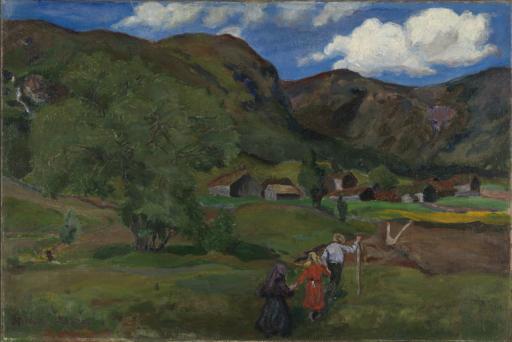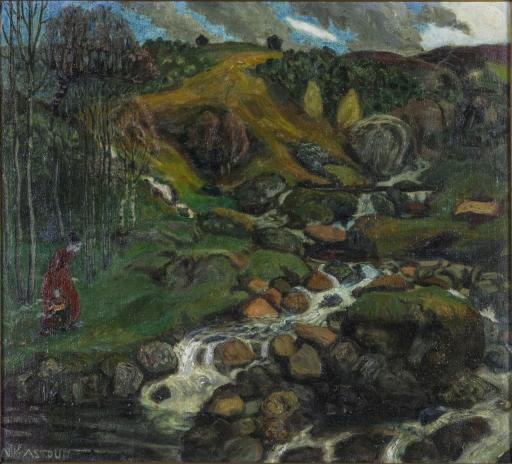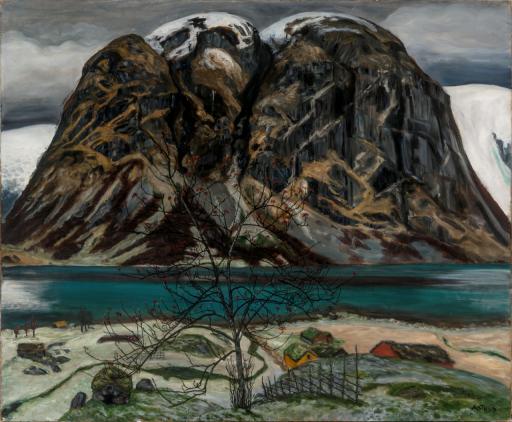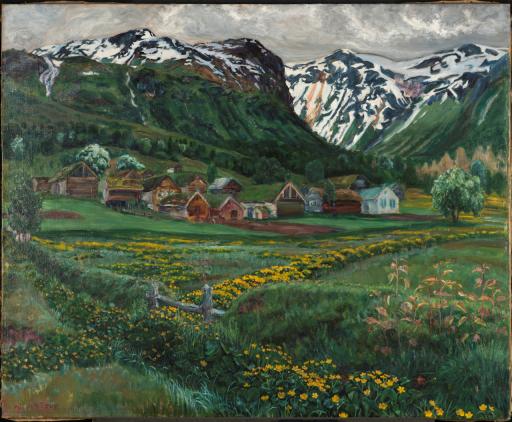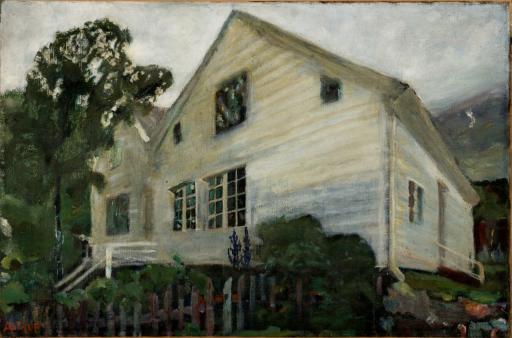The “Norwegian Art Exhibition” in Charlottenborg in Copenhagen in 1915 was an important presentation of Norwegian art abroad. Charlottenborg, an exhibition hall erected in 1883 and connected to the Art Academy, was considered a major exhibiting venue in the Danish capital, and housed among other things Denmark’s annual spring exhibition.
The committee behind the selection and mounting of the exhibition was headed by Professor Halfdan Strøm and the artist Thorvald Erichsen, with assistance from the painters Bernhard Folkestad and Henrik Sørensen, as well as the sculptor Jo Visdal and the museum director Jens Thiis. The selection consisted of approximately 250 paintings, 150 works on paper and 21 statues. According to Strøm, the exhibition was in all likelihood “the best exhibition that Norwegian artists have ever had Abroad”.
The exhibition was opened with pomp and ceremony. The Danish Royal Family was fully represented, and the lively Norwegian consul Christen Sandberg arranged an opening reception that included acquisitions and dance. According to the art critic Jappe Nilssen, he was himself carried away by the euphoric atmosphere on the opening day: “The success was irrefutable […] the Norwegian colours were once again allowed to surge with patriotic pride”. He later qualified this perception. Nilssen believed the mounting of the exhibition destroyed the overall impression of several of the artists’ works. As an example he mentioned the mounting of Christian Krohg and Fritz Thaulow: the works were hardly representative and moreover spread around the venue.
Edvard Munch, who was heavily represented in the show, designed the poster for the exhibition. Astrup was represented with six paintings, four of which were on loan from the Rasmus Meyer Collection.

